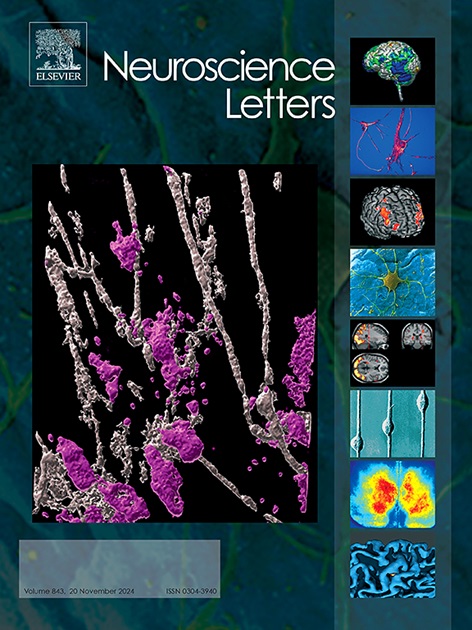Chronic administration of 1,3-di-o-tolylguanidyne induces catalepsy and reduces immobility responses by clamping and grasping in Wistar rat, evaluation in vivo and in silico
IF 2
4区 医学
Q3 NEUROSCIENCES
引用次数: 0
Abstract
Catalepsy, used to assess antipsychotic effects in animal models, involves sustained abnormal postures and resistance to displacement through balance reflexes. In contrast, immobility is a passive, stimulus-induced state marked by reduced movement and responsiveness, it can be triggered by a variety of stimuli. We found that a single administration of 1,3-di-o-tolylguanidine (DTG) had no effect on catalepsy, whereas daily administration induced cataleptic behavior by day 21. DTG reduced dorsal (grasping) and clamping immobility from the first day of administration, and this reduction persisted through day 21. Our findings support the potential use of sigma receptors as targets for antipsychotic drug development. Molecular dynamics studies indicate that DTG exhibits high stability and binding affinity for sigma-1 and dopamine D2 receptors, which may underlie its behavioral effects. Given the well-documented cataleptic properties of haloperidol, we compared and discussed both the molecular dynamics and previously reported behavioral effects of DTG in relation to haloperidol.

长期给药1,3-二-邻多聚胍通过Wistar大鼠夹紧和抓握诱导猝倒和减少不动反应,体内和计算机评价
在动物模型中用于评估抗精神病作用的猝倒症包括持续的异常姿势和通过平衡反射对位移的抵抗。相反,静止不动是一种被动的、由刺激引起的状态,其特征是运动和反应性减少,它可以由各种刺激触发。我们发现,单次给药1,3-二-邻甲基胍(DTG)对催化作用没有影响,而每天给药则在第21天诱导催化行为。从给药第一天起,DTG减少了背侧(抓握)和夹紧不动,这种减少持续到第21天。我们的发现支持了sigma受体作为抗精神病药物开发靶点的潜在应用。分子动力学研究表明,DTG对sigma-1和多巴胺D2受体具有高稳定性和结合亲和力,这可能是其行为效应的基础。鉴于氟哌啶醇的良好的催化特性,我们比较和讨论了分子动力学和先前报道的与氟哌啶醇相关的DTG的行为效应。
本文章由计算机程序翻译,如有差异,请以英文原文为准。
求助全文
约1分钟内获得全文
求助全文
来源期刊

Neuroscience Letters
医学-神经科学
CiteScore
5.20
自引率
0.00%
发文量
408
审稿时长
50 days
期刊介绍:
Neuroscience Letters is devoted to the rapid publication of short, high-quality papers of interest to the broad community of neuroscientists. Only papers which will make a significant addition to the literature in the field will be published. Papers in all areas of neuroscience - molecular, cellular, developmental, systems, behavioral and cognitive, as well as computational - will be considered for publication. Submission of laboratory investigations that shed light on disease mechanisms is encouraged. Special Issues, edited by Guest Editors to cover new and rapidly-moving areas, will include invited mini-reviews. Occasional mini-reviews in especially timely areas will be considered for publication, without invitation, outside of Special Issues; these un-solicited mini-reviews can be submitted without invitation but must be of very high quality. Clinical studies will also be published if they provide new information about organization or actions of the nervous system, or provide new insights into the neurobiology of disease. NSL does not publish case reports.
 求助内容:
求助内容: 应助结果提醒方式:
应助结果提醒方式:


